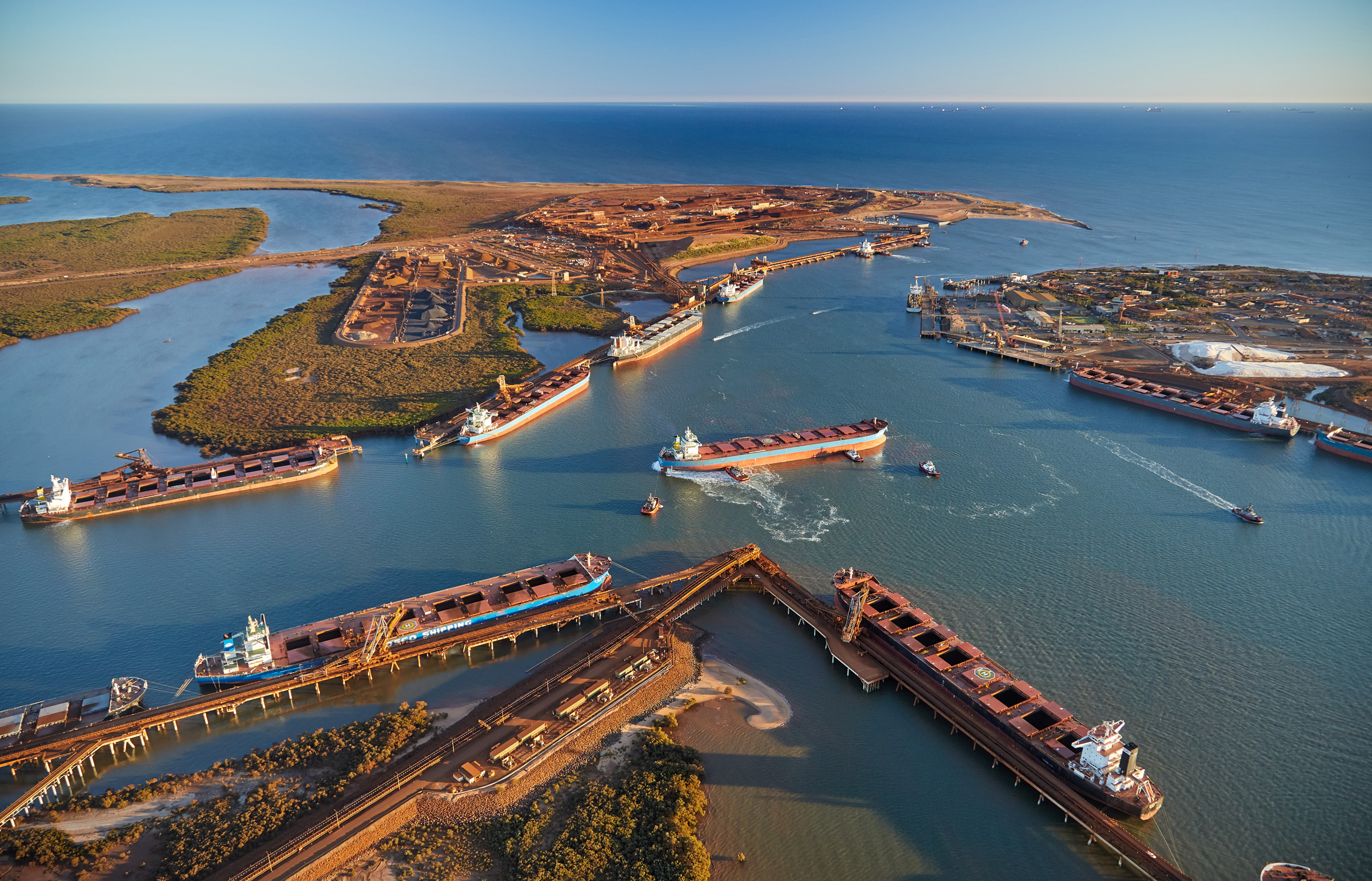The only shipping channel out of Port Hedland connecting some of the biggest iron ore miners in the world with their international customers is 22 nautical miles long and takes three hours to transit.
With a convoy of around six vessels often leaving in a time-and-tide-constrained, one-way window, a breakdown or emergency that cripples any of those vessels has the potential to delay exports valued at millions of dollars and cause further landside delays.
There is no room for error.
The intricacies of managing vessel movements and the contingency planning for emergency events were outlined by Port of Port Hedland Harbour Master Heathcliff Pimento at PHIC’s November Community Industry Forum.
“We cannot afford to have an incident which will block the shipping channel,” Captain Pimento said. “There is no escape route and there is no turning back once the vessel is committed to the main shipping channel.”
Using an example of the third vessel in a convoy becoming disabled and blocking the channel, Captain Pimento said the following vessels would have entered and committed to the departure channel and would be catching up to the location of the distressed vessel.
“Unfortunately, while these following vessels will need to slow down and/or stop, the tide does not stop, and it will continue to ebb,” he said.
“In Port Hedland we sail with very small (keel clearance) margins and as the tide falls the vessels that are unable to depart the channel within their sailing windows will run out of water and run aground.
“This is the biggest risk we have for the shipping channel. Any blockage will immediately halt shipments in and out of Port Hedland, resulting in significant impact to trade in Western Australia.”
He said that as a contingency, an emergency passing lane had been dredged to enable a disabled vessel in the channel to be bypassed, which caters for 98 per cent of draft-restricted vessels.
Two refuge zones had also been established to safely hold a vessel in an emergency.
Since being established, the refuge zones have been used to hold a vessel with main engine failure and another hit by a blackout.
“Both scenarios would have had very different consequences had the emergency passing lane and refuge zones not been present,” Captain Pimento said.
PPA holds regular emergency response exercises, with the most recent covering a fire on a vessel at berth, and an oil spill.
“These drills are all carried out with the objective of ensuring response plans are structured and effective and that the responders are familiar with their duties when a response to an emergency is required,” Captain Pimento said.
“But we don’t want incidents to occur and while we train and drill for them, we all want safe operations in the port and to go home and return to a safe working environment the next day.
“At PPA, we strive to achieve efficiencies and break new targets, with safety of operations as a key focus.
“While we have strict controls and are prepared to respond to incidents and unfavourable events, we expect vessels calling into Port Hedland to operate in a safe manner.
“Safe ships and safe operations protect the safety of the shipping channel and results in a safe and efficient port.”
He said it was also vital for recreational skippers to operate safely.
“All skippers are reminded to stay well clear of shipping channels and restricted waterside areas,” he said.
“Bulk carriers have a blind spot that extends for hundreds of metres, and they cannot change course quickly.
“With more than 17,000 vessel movements occurring each year at PPA ports, skippers need to be aware of the rules and restrictions to keep themselves and their passengers safe.”


